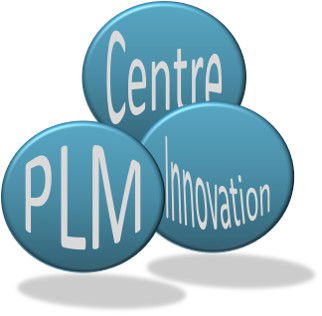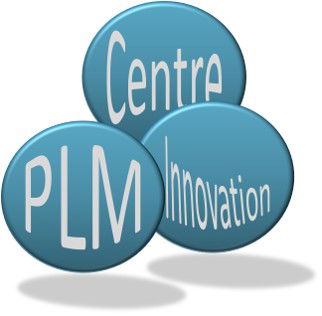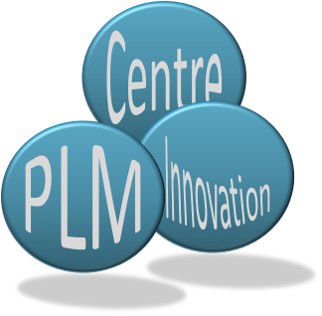A view on the PLM challenges, each PLM project is different with varying degrees of focus on a particular part of the business and the drivers for change.

PLM - this well used acronym conjures up many different viewpoints and emotional triggers dependent upon the industry or commercial setting to which it is applied. For me personally it is a methodology which encompasses at the very least the following:
A complete product design process
A complete manufacturing process
So, what is new about that you may be asking, well let’s dig a little deeper.
Today the market place is saturated with PLM vendors offering their own CAD application tools and solutions. Importantly regarding PLM, their own associated data management approach and life cycle management possibilities. For PLM vendors the emphasis is very much on possibilities and a future vision for how their suite of bundled PLM applications can improve a business, especially those companies engaged in design and manufacturing.
I think we all appreciate the challenge is not simply wrapping the PLM applications that are on offer around a two-stage process i.e. design into manufacture without much deeper analysis of the PLM project scope, management expectations and current business processes. This should also include product & project analysis with some form of work breakdown structures which are product orientated.
The managements objectives for PLM could be starting from a complete new or existing design process encompassing a sales order, how it is engineered, through design, testing into production. With other questions arising e. g. is it a standard product, is it a special requirement away from the norm, with further additional design content? Is it a brand-new start up product driven internally by a strategic company objective? Is it a minor or major modification to an existing part? What supply chain involvement will there be? Therefore, understanding how the design process itself operates is critical. What inputs and outputs from within the product development cycle occur, what requires manual input and in what form, via which process.
What simultaneous or concurrent actions occur or at the very least what sequential events and when does a complete PLM manufacturing process need to be considered. A primary management goal as part of the PLM project may be to include the ERP and logistics through to end of life use. As ambitions grow, then so does the risks and challenges. What involvement is there going to be with suppliers in terms of engineering inputs and logistical supply? What are the assembly process steps, are they documented, how are change requests managed pre- & post production? What parts require machining, where is this done on or off site by suppliers? Do they work directly off the 3D CAD models or do they require drawings? What are the drawing standards being used e.g. is GD&T applied. Are the drawings fully associative with the 3D?
We can start with an old term adage which still holds some truth with regard to PLM considerations, “Parts are manufactured, products are assembled. This also leads to understanding the product configurations, including possibility of several BOM structures. Managing product configurations can be complex especially when involving a large variety of electronic and mechanical parts.
None of this is news to PLM vendors after all managing product data is big business with high value investments being made by companies requiring PLM solutions. Although the challenges are great so are the rewards for both customer and PLM vendor. It can of course go terribly wrong; development and implementation periods get extended. Post implementation dis-connects to other business process remain, legacy methods continue and the final results of the PLM project do not bring the ROI expected.
Please remember if you are contemplating a PLM project – PLM vendors sell a core database application with associated CAD applications. They do not provide a turnkey solution for an entire business process which includes all complete product development process, nor the complete manufacturing process.
Returning to the original limited scope of a two-stage process i.e. design into production it becomes apparent that there are many layers of detailed requirements and sub processes, involved. Supported by increasing levels of specialised applications be it CAE, test equipment, prototyping etc. Therefore, PLM vendors cannot provide one single turn key solution, this is never available. This means any PLM project needs to be implemented with a clear and well understood project scope and the implications that go with it.
Some PLM project tips for success
Board approval with a level of participation via a champion
Utilise OOTB functionality as far as possible
Where bespoke software development is necessary understand the reasons why
Any software testing and development – use classic waterfall approach (via the vendor)
Have a clear scope and project plan – with a PLM project manager
The PLM project manager plays a key role and must have full appreciation for:
The business processes
Life cycle rules for approval and releasing
Test and development requirements
Gateway approvals during the PLM development and implementation phases
Reporting metrics
Highlighting issues, shortfalls, technical or resource implications
Project risks
Immediately after deployment of the PLM project or a go live situation other factors come into play.
But these should also be part of the original project plan because they impact on any perceived PLM project success. These requirements include:
User training and PLM education tailored to individual roles
User roles and responsibilities for data access
User roles and responsibilities within the life cycle release process
Help desk arrangements, SLA agreements internal or external support
Any application de-bugging
Software and hardware platform, licence arrangements
Funds for future maintenance and licensing
Levels of data security and access to third party software






